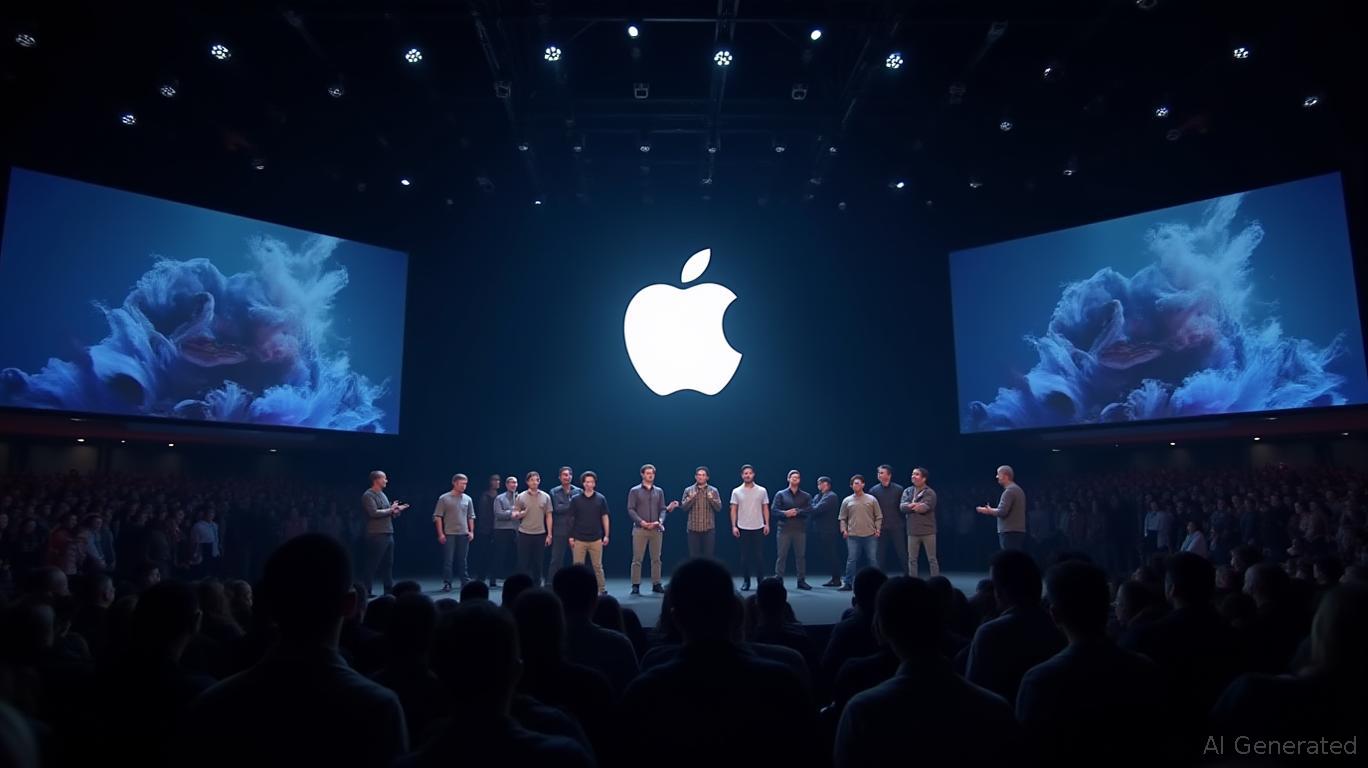Apple Unveils Liquid Glass Design, New Software Updates at WWDC
Apple recently held its highly anticipated Worldwide Developers Conference (WWDC), unveiling a range of significant updates across its software platforms during a 90-minute keynote. The event garnered considerable attention from consumers and investors, particularly following the company's decision to indefinitely postpone some of its artificial intelligence (AI) features last year. While Apple's advancements in AI remained modest, the company introduced a variety of non-AI updates aimed at enhancing user experience across its ecosystem.
The most striking announcement was the introduction of a new visual design language called "Liquid Glass." This design incorporates lighter, more transparent elements, suggesting a future where more devices will feature glass materials. The design is reportedly prepared for the 20th anniversary of the iPhone in 2027. As part of its brand rejuvenation,
has decided to use year designations instead of version numbers for its software. This year's updates include iOS 26, iPadOS 26, 26, macOS 26, watchOS 26, and visionOS 26.iOS 26 brings a host of new features, including a redesigned interface with transparent icons, a revamped navigation bar, and a menu bar that aligns with the Vision Pro headset. The new Game Center app allows users to view friends' gaming activities, issue challenges, and integrate resources from the App Store and Apple Arcade. The Phone app has been upgraded to include recent calls, frequent contacts, and voicemail, along with real-time call alerts. The Messages app now supports voting in group chats, background images, and Apple Cash payments. Both the Phone and Messages apps have enhanced junk filtering systems. The Camera app has been simplified for better efficiency, and the Lock Screen now features adaptive time displays, dynamic 3D wallpapers, and smart photo carousels. Safari has been updated to a full-screen, borderless layout, and Apple Music now offers lyric translations and pronunciation assistance. The Wallet app integrates flight tracking, airport maps, and luggage tracking through the Find app, and supports digital ID generation for passports. The Maps app has been enhanced to learn frequent routes and includes a dedicated section for visited locations.
iPadOS 26 introduces innovative multitasking features, allowing users to freely adjust window sizes and stack multiple windows. Apps retain their layout upon restart, and the "App Dock" displays all open applications. A new menu bar can be accessed by swiping down from the top or moving the mouse to the top, and developers can customize it. The Preview app now offers professional PDF and image viewing and editing tools, supports form auto-fill, and includes a new Notes app. File management has been upgraded with collapsible folders that can adjust column widths and support custom colors, icons, and emojis. Default app settings can be configured by file type or specific files, and background tasks like video exports are optimized to prevent interruptions during multitasking. Audio input has been enhanced to support independent microphones for different apps, improving podcast recording experiences.
watchOS 26 adopts the Liquid Glass design language across the board. Smart contextual widgets automatically display based on the situation, such as fitness widgets when entering a gym. The new Fitness Partner feature provides personalized guidance based on exercise history. Gesture controls have been upgraded to include wrist flicks for rejecting calls or notifications, and environmental noise levels are intelligently adjusted to control notification vibrations. The Reminders app is now available on the Apple Watch, and the Control Center supports quick actions for third-party apps.
macOS Tahoe 26 features a new visual design with Liquid Glass elements in the Dock, toolbar, and sidebar. The Game Center app is now available on Mac, mirroring the iOS version. The Control Center and menu bar support deep customization, and folders can be personalized with colors, emojis, and symbols. The Phone app syncs with the iPad version and includes upcoming iPhone enhancements. Real-time activity tracking allows users to monitor Uber Eats orders and other iPhone activities on their Mac. The Focused Search feature provides a one-stop solution for finding files, calendars, messages, and PDFs. The Notes app is now available on Mac, supporting cross-device synchronization.
tvOS 26 adopts the Liquid Glass design language to ensure that operations do not interfere with content viewing. It supports quick user switching, optimized streaming logins, and a new karaoke feature that allows iPhones to be used as microphones, supporting multi-person singing and emoji interactions.
visionOS 26 introduces spatial widgets that can be freely placed and permanently saved in position. Virtual avatars have been enhanced with improved side profiles, skin textures, and new accessory options. The shared space experience supports multiple users watching movies, playing games, or making FaceTime calls together. Spatial photos have been enhanced with generative AI algorithms to create multi-angle 3D scenes. The system fully supports PS VR2 controllers, offering six degrees of freedom tracking, finger touch detection, and haptic feedback. Enterprise features have been upgraded to support team device sharing and new software development frameworks. The system can automatically unlock an associated iPhone when wearing Vision Pro, and calls can be answered directly through Vision Pro.


Comments
No comments yet